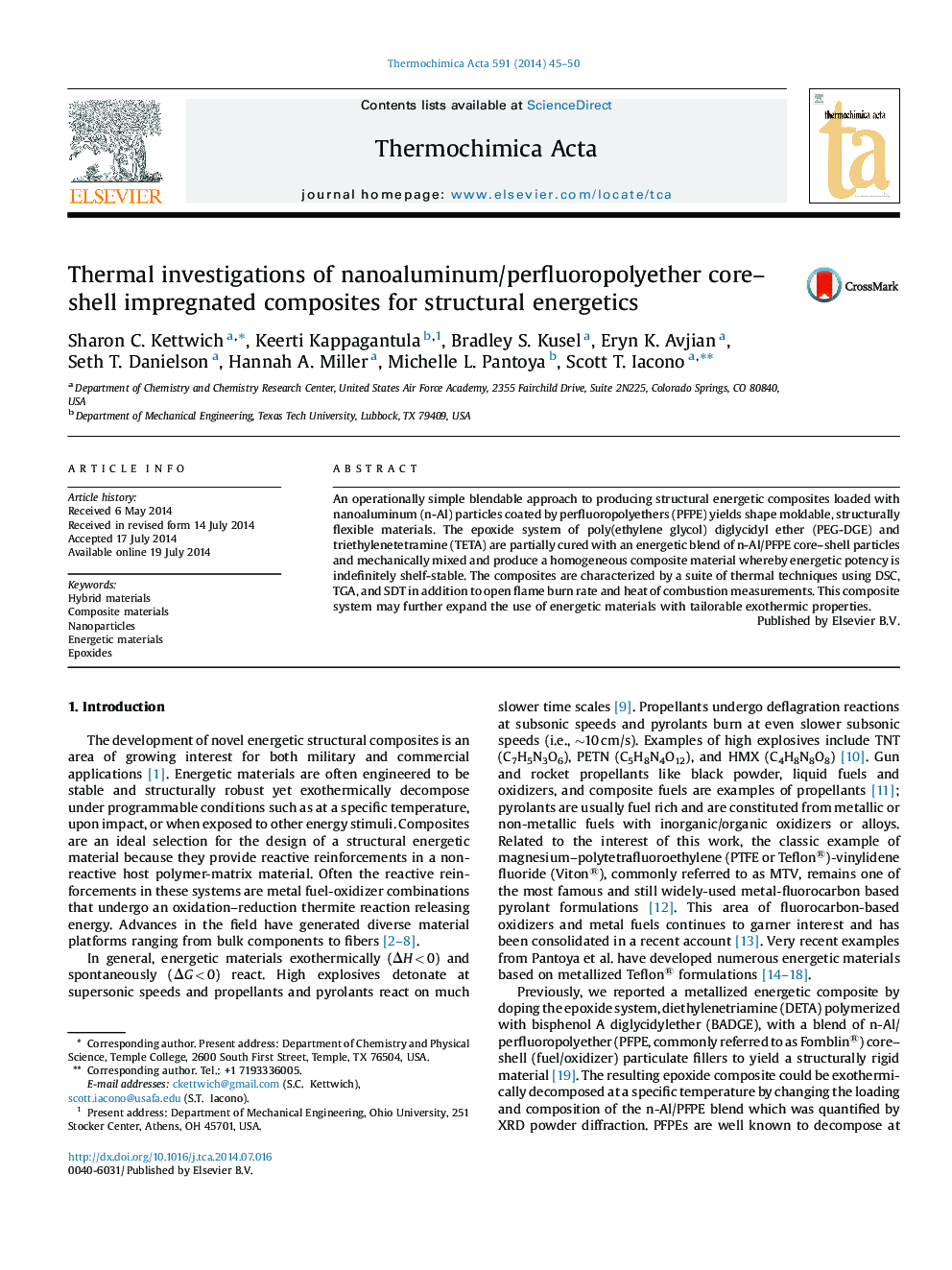| Article ID | Journal | Published Year | Pages | File Type |
|---|---|---|---|---|
| 673174 | Thermochimica Acta | 2014 | 6 Pages |
•Operationally simple blendable methodology produces epoxy-based structural energetic composites.•Homogeneous composite material demonstrates indefinite shelf-stable energetic potency.•Composite system expands the use of energetic materials with tailorable exothermic properties.•This metalized epoxy composite system is a slow burning pyrolant packaged as a moldable matrix.•Glass transition temperatures of resulting composites do not shift from the unfilled control matrix.
An operationally simple blendable approach to producing structural energetic composites loaded with nanoaluminum (n-Al) particles coated by perfluoropolyethers (PFPE) yields shape moldable, structurally flexible materials. The epoxide system of poly(ethylene glycol) diglycidyl ether (PEG-DGE) and triethylenetetramine (TETA) are partially cured with an energetic blend of n-Al/PFPE core–shell particles and mechanically mixed and produce a homogeneous composite material whereby energetic potency is indefinitely shelf-stable. The composites are characterized by a suite of thermal techniques using DSC, TGA, and SDT in addition to open flame burn rate and heat of combustion measurements. This composite system may further expand the use of energetic materials with tailorable exothermic properties.
Graphical abstractFigure optionsDownload full-size imageDownload as PowerPoint slide
